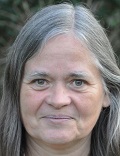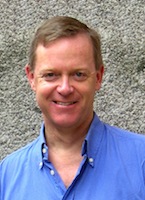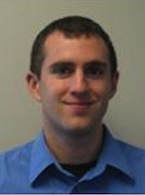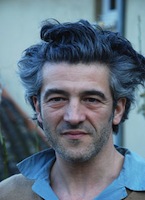
|
|
|
Program > Sessions - Keynotes
Theme 1 – Dust and Aerosol: Environmental records of Anthropogenic Activities and Climate Changes
Theme chaired by Karine Deboudt1, François De Vleeschouwer2,3 and Nadine Mattielli4
1 Université du Littoral - Côte d'Opale (ULCO); Laboratoire de Physico-Chimie de l’Atmosphère (LPCA); Dunkerque, France
2 Université de Toulouse; INP, UPS; EcoLab (Laboratoire d’Ecologie Fonctionnelle et Environnement); ENSAT, France
3 CNRS; EcoLab; France
4 Laboratoire G-Time (Geochemistry : Tracing by Isotopes, Minerals and Elements), Department of Geosciences, Environment and Society (DGES), Université Libre de Bruxelles (ULB), Belgium
This session will gather contributions dealing with identification of origin and processes that control paleodust, dust and aerosol emissions, their evolution and aging. Natural or anthropogenic environmental forcing can be reflected by changes in dust fluxes and compositions, which might be sensitive indicators of major biogeochemical cycle modifications on different spatial and temporal scales. Studies of monitoring and characterization (mineralogical and geochemical analyses on single/multiple particles) of industrial, urban or agriculture-related dusts are especially encouraged, as well as works on assessment of environmental and occupational dust induced health effects. In addition, we welcome papers focusing on the application of new analytical techniques, novel geochemical proxies (e.g. non-traditional stable isotopes) or instrumental and statistical/modeling approaches to link aerosol emissions and environmental records on human health and climate changes.
Theme 2 – Isotopes and Chemical Speciation: Tracing Transfer Processes in the Critical Zone
Theme chaired by Jörg Schafer1, Sophie Opfergelt2, David Houben3,Yann Sivry4, Natacha Brion5, Jane Barling6
1 University of Bordeaux, UMR EPOC 5805, Pessac, France
2 Université Catholique de Louvain, UCL, ELIE, Louvain-La-Neuve, Belgium
3Institut Polytechnique LaSalle, HydrISE, Beauvais, France
4Université Paris–Diderot & Institut de Physique du Globe de Paris, Laboratoire de Géochimie des Eaux, Paris, France
5Vrije Universiteit Brussel, Analytical and Environmental Geochemistry (AMGC), Brussels ; Belgium
6University of Oxford, Department of Earth Sciences, Oxford, UK
This theme aims at providing a better understanding of the near surface environment where complex interactions between rock, soil, water, air, and living organisms that regulate sources, sinks, geochemical cycles and mobilization processes of life-sustaining resources. In addition to well-recognized contaminants (e.g. Pb, Zn, Hg), a range of trace elements, including platinum group metals, certain rare earth elements, and Y, Nb, Ta, Ga, In, Tl, Ge and Te, are increasingly exploited and emitted due to their use in new technologies in the fields of communication, mobility and energy. Limited resources and supplies, make most of these elements technology-critical elements (TCE) of strategic importance, and initiatives at national and international levels are therefore underway to secure their availability in the coming years. Because of their (i) increasing use, (ii) poorly understood biogeochemical behavior and (iii) potential toxicity, TCE and other rare trace elements are emerging inorganic contaminants of substantial concern. Special attention will be paid to trace element and isotope analyses and monitoring to detect and model bioavailability and bioaccessibility of such metals and other pollutants in the environment and the associated risks to human health. In addition, we welcome papers focusing on models helping speciation of key geochemical elements in aquatic and terrestrial environments.
--------------------------------------------------------------------------------------------
Thanks to the COST action, we are pleased to invite Filella Montserrat. She is Professor at the Institute F.-A. Forel, University of Geneva, Switzerland. Her main research interests are focused on a better understanding of the physical-chemical processes that control the behavior of chemical elements in environmental and biological compartments , combining computer modeling with measurements in the laboratory and in the field.
|
Keynote University of Geneva, Switzerland Montserrat Filella is a chemist and teaches Environmental Chemistry at the University of Geneva, Switzerland. Her main research interests focus on the understanding of the physicochemical processes regulating the behaviour of chemical elements in environmental compartments, mainly by combining field and laboratory measurements with physico-chemical calculations. The three main axes of her research concern the study of natural colloids, natural organic matter (quantification and interaction with trace elements) and ‘less-studied’ elements. She is particularly interested in the exploration and use of critical appraisal and evidence-based methods. She is a IUPAC fellow and member of a number of scientific societies. She is currently vice-chair of the UE COST action “Network on technology-critical elements - from environmental processes to human health threats”. |
||
 |
This session is supported by the COST Action TD1470 NOTICE - Network On Technology-Critical Elements: From Environmental Processes To Human Health Threats (http://www.costnotice.net/) |
Theme 3 – Geochemistry and Health
Theme chaired by Franck Vanhaeke1 and Klervia Jaouen2
1 Ghent University, Department of Analytical Chemistry, Ghent, Belgium;
2 Max Planck Institute for Evolutionary Anthropology, Dpt of Human Evolution, Leipzig, Germany.
Living organisms have evolved to coexist with and utilise the inorganic elements that constitute the Earth. Both major and trace elements affect the health of living organisms. To stay healthy, living organisms can only tolerate a relatively narrow concentration range of metals, even for essential trace metals such as iron and copper. Exposure to concentrations outside of these limits can be harmful, especially with respect to heavy metals. Understanding the functioning of elemental cycles, and their perturbation by human activity has proven to be relevant for human, animal and plant wellbeing and can shed light on paleoclimate and ecology. This session aims to gather the latest advances on our understanding of the impact of inorganic elements on global health.
Special Session 1 – SpatioTemporal Trends of Metal Contaminants in the Atmosphere
Session chaired by François De Vleeschouwer1,2, Vojtech Ettler3 , Fabrice Monna4 and Lenny Winkel5
1 Université de Toulouse; INP, UPS; EcoLab (Laboratoire d’Ecologie Fonctionnelle et Environnement); ENSAT, France
2 CNRS; EcoLab; France
3 Institute of Geochemistry, Mineralogy and Mineral Resources, Faculty of Science, Charles University in Prague, Czech Republic
4 ARTéHIS, Environmental Geochemistry, UMR6298, Université de Bourgogne – CNRS – Dijon, France
5 ETH Zurich, dep. of Environmental Systems Science, Zürich, Switzerland
Understanding the trends in contaminants and geochemical tracers in environmental archives is crucial to better tackle changes induced either by natural or anthropogenic forcing. Environmental archives as well as peatlands, soils and lake sediments have proven to be not only valuable recorders of variations in the fluxes of inorganic and organic species (REE, Ti, halogens, Pb, As, Sb, Hg, carbon, POPs, radionuclides and others), but also sources and sinks of contaminants, which are of major concern due to elevated risks of exposure to the environment and humans. As dynamic geochemical systems, some of these archives (e.g. peatlands, overburden sediments, lake or coastal sediments) may store or release toxic metal elements (e.g. Pb, Hg, As, Cd) as a result of climate change and human disturbances.
|
-------------------------------------------------------------------------------------- Keynote «Mineralogy of the atmosphere : Department Chair & Professor
|
||
Professor and chair of the Department of Earth and Environmental Science at the University of Pennsylvania, received his PhD in Earth Sciences at the Swiss Federal Institute of Technology (ETH) in Zurich and his Venia Legendi at the University of Basel. He has extensive international research and teaching experience through his posts at the University of British Columbia (Canada), the Carnegie Institution for Science in Washington D.C., the University of Siena (Italy), the Australian Nuclear Science and Technology Organisation in Sydney, Purdue University in Indiana, and the University of Freiburg in Germany. He is an editor for Journal of Petrology and Chief Editor for European Journal of Mineralogy, and is a Fellow of the Mineralogical Society of America and the Geological Society of London. His research interests lie in the fields of mineralogy, petrology, environmental geochemistry, and health impacts of earth materials.
Special Session 2 – Nanoparticles in the Environment: Fate and Effects
Special Session chaired by Camille Larue1,2, Laure Giamberini3,Eric Pinelli1,2, Laury Gauthier1,2
1 Université de Toulouse; INP, UPS; EcoLab (Laboratoire d’Ecologie Fonctionnelle et Environnement); ENSAT, France
2 CNRS; EcoLab; France
3Université de Lorraine, LIEC (Laboratoire Interdisciplinaire des Environnements Continentaux), France
Nanoparticles, both from natural and anthropogenic origins, have always existed in our environment. They are present in every compartments, from ultrafine atmospheric particles to nanoparticles present in the colloidal fraction of soils and water. Recent decades have seen the emergence of manufactured nanoparticles (NPs) with new properties used in various applications (medicine, electronics, computers, automotive industry, and in more than 1800 consumer products including food) raising concerns about their fate in the environment due to enhanced surface reactivity. If no strict regulations are currently effective concerning NPs, several OECD or FDA recommendations are already available for industry and toxicological testing. It has also been underlined the necessity to develop knowledge in analysis and characterization of NPs in physical and biological matrixes, and their eco(toxicity). This has led to a number of questions as their speciation, their interaction with other contaminants or their effects associated with human health and environmental risks. This session aims at being a discussion forum centered on: (i) NP physico-chemical characterization, (ii) their interactions with living organisms and (iii) their potential environmental and health issues. Young researchers are encouraged to present their work.
|
|
-------------------------------------------------------------------------------------- Keynote Dr. Elijah J. Petersen
Environmental Engineer |
|
Environmental scientist at the National Institute of Standards and Technology (NIST) focusing on the development of reliable test methods on the potential ecological effects of nanomaterials. He has published over fifty peer-reviewed articles. He is an associate editor of the journal NanoImpact and on the editorial board of Environmental Pollution and Environmental Toxicology and Chemistry. He currently is the United States co-chair for the Ecotoxicology community of research of the EU-US Bridging NanoEHS Research Efforts organization and is one of the leaders in the development of an OECD guidance document on aquatic toxicity testing of nanomaterials.
Special Session 3 – Geochemistry and Biomedical Issues
Session chaired by Victor Bondanese1 and Fiona Larner2
1 Laboratoire de Géologie, Ecole Normale Supérieure de Lyon, France;
2 Department of Earth Sciences - University of Oxford, UK.
The study of isotopic variability has provided additional value to the quantitative analysis of elemental concentrations, in order to understand not only the environment, but also the metabolism of different organisms, both in the present and in the past. Recently, the isotopic analysis of metals such as Ca, Mg, Fe, Cu and Zn has successfully been applied to human diseases (Alzheimer’s disease, osteoporosis, and cancer), uncovering a previously unknown source of information regarding the underlying biological processes and suggest new approaches to combat such diseases. In this special session, we invite contributions that use inorganic elements and their isotopes, as diagnostic probes to understand biomedical issues and explore their application in medicine.
|
-------------------------------------------------------------------------------------- Keynote « Cupper and sulfur in liver cancer »
Chargé de recherche |
||
When I moved at the Ecole Normale Supérieure de Lyon, we rapidly developed with Francis Albarède and Philippe Télouk several avenues of research in isotopic metallomics (body isotopic landscape; healthy isotopic variations; pathological imbalances). In 2013, I organized as a fringe event of the annual Goldschmidt Conference held at Florence, the first workshop on "Biomedical Applications of Geochemistry" in a small Tuscan village. Currently, I'm working on the possible relationships between the sulfur and copper isotope compositions in blood and tumor burden in mice and humans.
--------------------------------------------------------------------------------------------------------------------------------------------------------------------------------

















